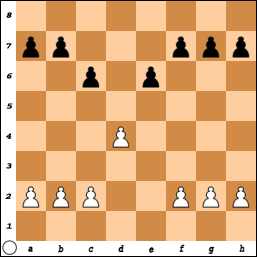Chess Videos
Chess Tools
Other
Review: How Chess Games Are Won and Lost by Lars Bo Hansen
Grandmaster Lars Bo Hansen's new title for Gambit, How Chess Games are Won and Lost, describes the author's personal approach to improving at each of the five phases in chess. Most chess books separate the game into opening, middlegame, and endgame, but Hansen usefully adds two transitional phases to the established three: (1) opening [69 pages]; (2) transition from opening to middlegame [37 pages]; (3) middlegame [37 pages]; (4) transition from middlegame to endgame (strategic endgame) [43 pages]; and (5) technical endgame [22 pages]. The book concludes with a final chapter on practical competitive tips [24 pages].
In HCGAWAL, Hansen's innovation is to separate the objective and subjective elements of the early phases. While a technical endgame may present a limited number of known winning methods, the first two phases provide significant scope for stylistic preferences. For example, all viable openings share certain objective goals, namely: (1) controlling the center, (2) developing the minor pieces, and (3) getting the king to safety. However, these objective goals may be carried out in any number of practical ways, and this is where subjective preferences drive a player's choices. Borrowing a theme from Watson's Secrets of Modern Chess Strategy, Hansen discusses how modern masters play the openings much differently than their forebears, but with the same three objectives in mind. On the practical side, Hansen suggests that only after identifying one's personal playing "style" can a player select openings that yield comfortable middlegame positions, and thereby maximize that player's skills and enjoyment of the game.
The book really shines in its discussion of the transition from the opening to the middlegame. This phase is strategic in nature, and is largely based on pawn structure. Hansen discusses how various pawn structures may relate to a player's personal "style." So that his advice does not exist in a vacuum, Hansen annotates a wealth of examples that exhibit his own personal approach to this phase. As white, Hansen plays solid lines with 1.d4 and 2.c4, while as black he steers toward the "light-square restraint" pawn structure typical of the Caro-Kann and semi-Slav, with pawns on c6 and e6 restraining a white pawn on d4.

Hansen includes a brilliant discussion of one major intersection in his opening repertoire, the Queen's Gambit Exchange variation, which he plays for both colors.
The middlegame, Hansen writes, is about the transformation of advantages. This view traces its lineage to Steinitz, and Hansen's treatment integrates the specific contributions to Steinitz's theories from the world champions Lasker, Capablanca, Alekhine, and Tal. On reading Hansen's discussion of Steinitz, I realized that the book is a modern successor to Lasker's Manual of Chess (also organized by phases). As HCGAWAL is no mere academic work but an improvement manual, Hansen devotes 38 pages to various middlegame themes including attack, defense, tactics, and positional play-again drawing upon examples from the author's games. Although these themes are covered more exhaustively elsewhere, one would be hard pressed to find a worthier summary.
Hansen labels the transition from the middlegame to the endgame "strategic endgames." As with the other transitional phase, strategic aspects predominate. While technical endgames require knowledge and memory of known methods, strategic endgames call upon a player's understanding and judgment. Thus it is not surprising that strategic endgames are often misevaluated by analysis engines. Hansen, the author of an earlier book on this phase of the game, Gambit's Secrets of Chess Endgame Strategy, summarizes his earlier findings in a discussion of fifteen principles of this phase. Owing perhaps to the author's earlier work on this phase, the section on strategic endgames is particularly instructive, concise, and well-organized. Personally, this is the weakest phase of my game, and reading this section served as a gentle introduction.
To conclude the five phases, Hansen gives 22 pages of useful examples on technical endgames. Again, this phase has been treated exhaustively elsewhere, but HCGAWAL serves as a useful launching-off point.
One criticism of the book is that the intended audience is unclear. For example, the discussion of the three basic opening principles is suitable for beginners, but in the same pages Hansen advises not to play particular openings (e.g., Benko gambit) above the 2200-2300 level. My other complaint is more subjective; I found that as an admirer of Spielmann and Tal, my personal "style" (if an 1800-rated player may be permitted to claim a style!) is diametrically opposite to Hansen's. Readers who identify with Hansen's solid stylistic preferences would be well-advised to adopt Hansen (2570 Elo) as a role model and study the chapters on the opening and transition to the middlegame in depth.
However, even slash-and-burn artists can review Hansen's approach to the early phases as an example of how a grandmaster improves at these stages of the game. More importantly, Hansen's chapters on the final three phases transcend personal styles. Therefore, all players could benefit from a study of HCGAWAL.
A glance at the bibliography reveals that the book's amazing breadth of coverage-from Nimzowitsch, to the cult-classic Chess for Tigers, to Watson. Though each chapter is not exhaustive due to space considerations, there is clearly "full compensation" for this relative lack of exhaustive depth. HCGAWAL is eminently readable for practical players who wish to improve at all five phases of the game, and covers the most instructive aspects of each phase from an autobiographical angle.
Patrick Bollig




